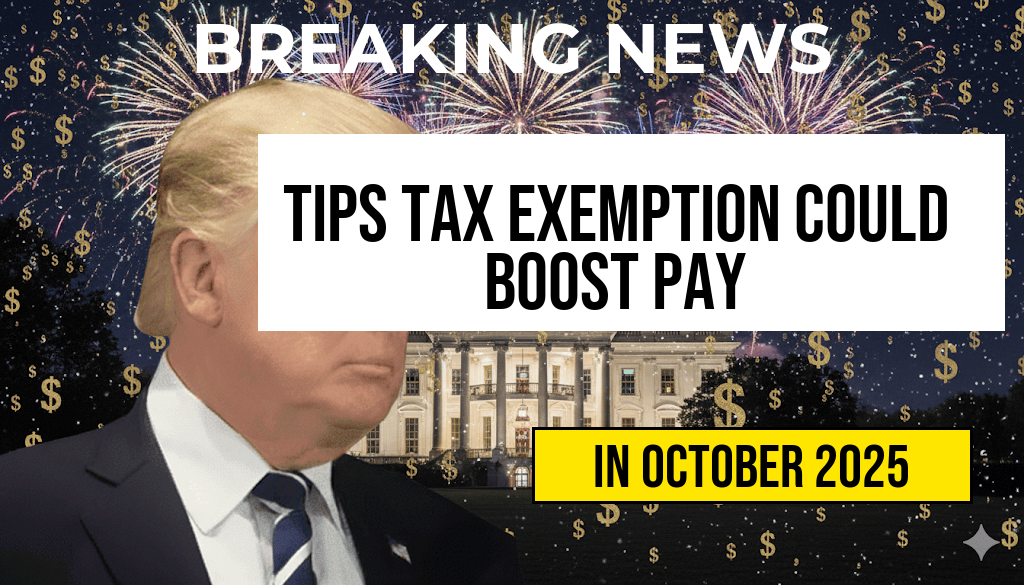As the economic landscape continues to shift, tipped workers across the United States are advocating for a tax-free threshold of $25,000. This push comes in response to ongoing debates surrounding wage structures and the financial pressures faced by employees in hospitality and service industries. However, this initiative has sparked concern among workers who may inadvertently jeopardize their eligibility for the Earned Income Tax Credit (EITC), a vital benefit for low to moderate-income families. Reports indicate that some workers could be at risk of losing over $1,000 in EITC benefits if the proposed tax exemption is implemented without careful consideration of its implications.
The Push for Tax-Free Income
Advocates for tipped workers argue that the current tax obligations disproportionately affect those in the service industry, where income is largely derived from tips. By establishing a tax-free threshold of $25,000, supporters believe that these workers would be able to retain more of their hard-earned money, ultimately benefiting their families and local economies.
Understanding the EITC
The Earned Income Tax Credit is designed to assist low to moderate-income individuals and families by reducing the amount of tax owed and potentially providing a refund. For many workers, especially those in tipped positions, the EITC can be a crucial financial lifeline. However, the EITC is predicated on reported income, which complicates the proposed tax-free threshold.
Potential Risks for Workers
While the idea of a tax-free income cap may seem beneficial, some experts warn that implementing such a policy could lead to unintended financial consequences. Many tipped workers rely on the EITC to supplement their incomes, and if they report lower earnings due to the new tax exemption, they could disqualify themselves from receiving this essential credit.
How Income Reporting Works
To clarify the relationship between tipped income and the EITC, it is important to understand how income is reported during tax season. Tipped workers must report their total earnings, including both wages and tips, to qualify for the EITC. If a worker’s reported income falls below a certain threshold due to the proposed tax exemption, it may result in a reduced tax credit or total disqualification.
| Income Level | EITC Amount (2023) |
|---|---|
| Single with no children (up to $16,480) | $560 |
| Married with two children (up to $59,187) | $6,728 |
| Single with one child (up to $43,492) | $3,733 |
Advocates and Opposition
Supporters of the tax-free threshold argue that it would help level the playing field for tipped workers, who often earn less than their non-tipped counterparts. They contend that the current tax structure fails to account for the unique financial challenges faced by those in the service industry. However, critics caution that any changes to tax policy should be approached with caution, emphasizing that financial stability for workers should not come at the expense of losing critical benefits.
Looking Ahead
As discussions surrounding this proposal continue, it remains crucial for policymakers to weigh the potential benefits against the risks. Stakeholders, including worker advocacy groups, tax professionals, and lawmakers, must collaborate to ensure that any changes to the tax code enhance financial security rather than undermine it.
Resources and Further Reading
Frequently Asked Questions
What is the proposal for tipped workers regarding a $25,000 tax-free income?
The proposal seeks to allow tipped workers to earn up to $25,000 in income without facing federal income taxes, aiming to provide financial relief for those in the service industry.
How might this proposal affect workers’ eligibility for the Earned Income Tax Credit (EITC)?
While the tax-free income could benefit many tipped workers, some may risk losing over $1,000 in EITC benefits, as the increase in reported income could disqualify them from receiving this crucial tax credit.
Who are the primary advocates for the $25,000 tax-free income proposal?
Advocates for the proposal include various labor organizations and unions representing tipped workers, who argue that the income threshold would help workers achieve greater financial stability.
What are the potential drawbacks of implementing this tax-free income for tipped workers?
One major drawback is that while the tax-free income could provide immediate benefits, it may inadvertently affect access to essential programs like the EITC, ultimately reducing overall financial support for some workers.
How can tipped workers learn more about how this proposal may impact their taxes?
Tipped workers can seek information from tax professionals or advocacy groups specializing in labor rights to understand the implications of the $25,000 tax-free income proposal on their overall tax situation and benefits.






